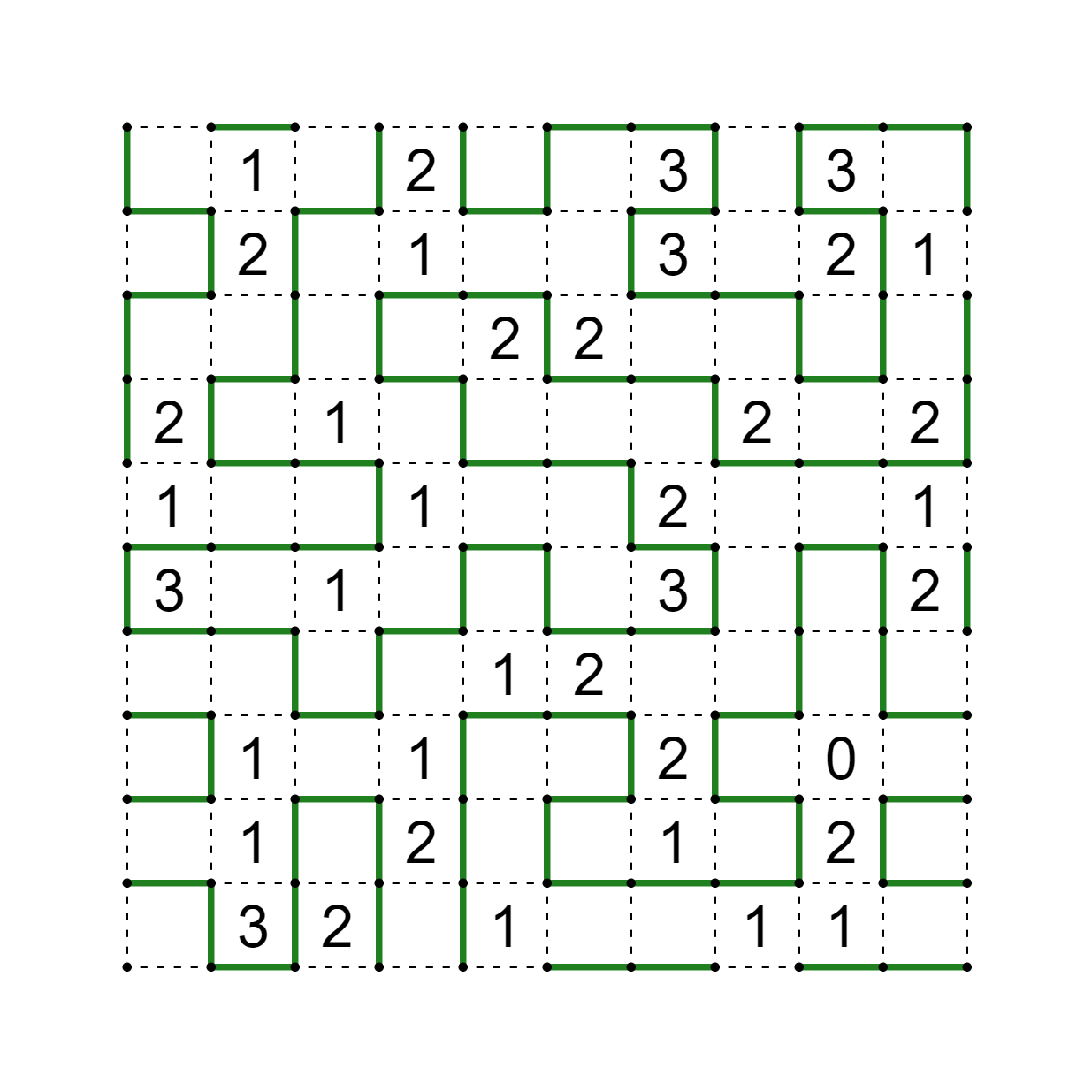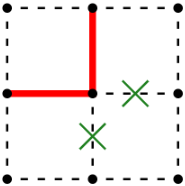This puzzle is part of the Monthly Topic Challenge #13: Variety Slitherlinks.
Have you ever wondered why there has to be an "inside" and an "outside" to every slitherlink loop?
Well, with a bit of rule-bending (grid-bending really) everything can be on the inside (or the outside if you prefer). All you have to do is wrap your grid around a torus so that it has no edges.
And just to add a bit more variety: Now that we have every cell on the same side of the loop, let's also require that there be a unique shortest path (travelling orthogonally) between every pair of cells. the path through the cells is narrow and twisty - no big open spaces.*
- Draw a single, non-intersecting loop that only consists of horizontal and vertical segments between the dots.
- The edges of the grid are joined (left-to-right and top-to-bottom) so that the grid is topologically a torus. The loop can travel off the left/right side of the grid and back on the right/left side (and similarly top/bottom).
- Numbers inside a cell indicate how many of the edges of that cell are part of the loop.
There must be a unique shortest path between every pair of cells (travelling orthogonally and not crossing the loop).- The path must be "narrow" - there must be no contiguous 2x2 block of cells inside the loop.*
Solve on Penpa here To get the solution checker to work, the left/right and top/bottom joined edges must be consistent (draw the loop on both where it travels along the edge of the grid).
* My attempt to hide the "no 2x2" restriction behind a unique path constraint failed because there is a cycle in the path that goes all the way around the torus. Trying to fix this with "shortest" also fails for even-width grids like this one because the total cycle length is even and for suitable pairs of points, the shortest distance is the same either way round.




